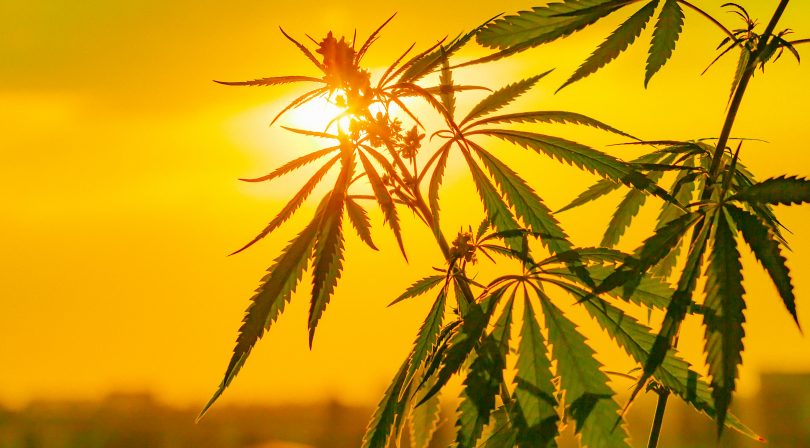Hemp has many well-documented uses that can benefit our own bodies, as well as the world around us.
Hemp is a phenotype of the Cannabis sativa plant species that is legally categorized as having less than 0.3 percent THC (tetrahydrocannabinol), although generally speaking, most hemp has around anywhere from 0.2 to 1 percent THC content. Hemp strains that produce flowers with higher levels of CBD (cannabidiol) will have closer to 1 percent.
In addition to having tremendous therapeutic value, hemp also has many industrial and environmental uses, often with quite a bit of overlap. For example, hemp can be manufactured into make an earth-friendly plastic alternative. This constitutes both industrial and environmental use.
When it comes to protecting the earth though, hemp is one of a group of plants that have the ability to be used in a process known as phytoremediation. In short, hemp literally sucks toxins out of the soil it’s planted into, but let’s take a more in-depth look at how this works.
Click here or use the sign-up form below to subscribe to the CBD Flowers Business Newsletter.
What is Phytoremediation?
Phytoremediation refers to a method of cleaning contaminated soil, air, and water using various plants. The Webster definition is “the use of green plants (known as hyperaccumulators) and the associated microorganisms, along with proper soil amendments and agronomic techniques to either contain, remove or render toxic environmental contaminants harmless”.
It’s a safe, cost-effective, and sustainable solution that utilizes a plant-based approach to help mediate the growing burden of human waste and pollution. Although it’s not a be-all end-all solution to this global problem, it does have a major role in our efforts to replenish the environment for future generations.
Phytoremediation has been used successfully around the world to restore several locations such as abandoned metal mines, sites where contaminants had been dumped or leaked during manufacture, and areas that have been affected by radiation. Numerous field tests have confirmed the feasibility of using plants for environmental detoxification from pollutants such as pesticides, metals, solvents, explosives, and crude oil.
Not all plants have the ability to remediate the earth. Hemp is one such plant, along with mustard, alpine pennycress, pigweed, and a few others. Even cultivars that are part of the same species can have varying abilities to pull contaminants. Many plants and subspecies will succumb to the damage caused by the pollutants they accumulate and thus, they die before any notable difference is made. That’s why a plant’s hardiness plays a big role in its success when using it for this purpose.
Although phytoremediation is a wonderful tool, it does have certain limitations. Phytoremediation effects are confined to the surface area and depth occupied by the plant’s root system, so the larger and more expansive, the better in this case. They also don’t completely eliminate the toxins they pull, but rather, it accumulates in their leaves, stalks or stems. This limits the uses for these plants once they mature and are ready for harvest. Phytoremediation is also largely dependent on the toxicity of the poisoned land, as well as the condition of the soil.
The Research
Utilizing industrial hemp is becoming an increasingly important topic of discussion and research. There are a few studies on the subject of hemp phytoremediation, so let’s take a look at what the experts have to say.
From a study published in 2002 in the Industrial Crops and Products Journal: “Hemp was used to examine its capability as a renewable resource to decontaminate heavy metal polluted soils. The influence of heavy metals on the fibre quality was of special interest. Determination of heavy metal content was carried out by means of atomic absorption spectroscopy (AAS). Four different parts of the plant were examined: seeds, leaves, fibres and hurds.”
A New Age Of Construction? Introducing Hempcrete And Hemp Plastic
The study notes continue: “In each case, the concentration relation was Ni>Pb>Cd. However, the heavy metal accumulation in the different parts of the plant was extremely different. All parts of hemp plants contain heavy metals and this is why their use as a commercially utilisable plant material is limited. We found that the highest concentrations of all examined metals were accumulated in the leaves. In this field trial, hemp showed a phytoremediation potential of 126 g Cd (ha vegetation period).”
Another study published in 2015 in the Clean Soil, Air, Water Journal echoed these findings. “The goal of this research is to explore the potential of hemp as a decontaminator of heavy metals by identifying the two important heavy metals responsive genes, glutathione‐disulfidereductase (GSR) and phospholipase D‐α (PLDα). The results revealed heavy metals accumulation; Cu (1530 mg kg−1), Cd (151 mg kg−1), and Ni (123 mg kg−1) in hemp plants’ leaves collected from the contaminated site. This shows the ability of the hemp plant to tolerate heavy metals, perhaps due to the presence of stress tolerance genes.”
All these numbers and terms are really just a fancy way of saying that, when hemp was put to the test, it worked… and it worked well. Not only did hemp phytoremediation effectively pull heavy metals from the soil, but it did so with minimal damage to the plant itself and its deep root system was able to cover a large area.
Hemp phytoremediation around the world
While hemp phytoremediation isn’t used much around the world, the technique has been long known to farmers and some countries have been experimenting with it on a larger scale since the 90s. According to Allison Beckett, cultivation expert at Marijuana.Com, “Industrial hemp has been used in areas of high radiation, with promising results. Not only does hemp pull toxic, heavy metals from the soil but it actually improves soil structure making it usable as productive farmland again. Plus, hemp is a vigorous plant that absorbs CO2 rapidly, making it an encouraging solution to climate change.”
Most famously is the nuclear catastrophe site at Chernobyl, Ukraine, which contrary to popular belief, is actually not abandoned anymore. As a matter of fact, nearly 4,000 people live and work in the area. This give a new sense of urgency to the matter of cleaning up the area to make it safe for the residents who inhabit it.
In February 1996, Princeton, NJ-based company Phytotech, Inc. reported that various plants had the ability to remove up to 95% of soil toxins in as little as 24 hours. In 1998, Phytotech, along with the Ukraine’s Institute of Bast Crops and Consolidated Growers and Processors (CGP), planted industrial hemp around the Chernobyl explosion site.
Immediately after the explosion, the radiation levels were recorded at 300,000,000 uSv/h, enough to kill a human being in just seconds. Today, radiation still exists in the area but has dropped significantly to around 0.3 uSv/h to 1.5 uSv/h. In 2001, a team of German researchers confirmed these results.
Although time is a major factor in the dissipation of radiation, it’s believed that the industrial hemp has helped considerably to push these efforts along.
While tourism to the area ramps up, caution is still advised around certain parts of Chernobyl, especially near the reactor site.
In 2011, hundreds of farmers in Puglia, Italy, started testing this theory as well. In an large-scale effort to clean up crop fields that had been polluted from dioxin from the nearby ILVA steel plant. This program is still in progress and conclusive data is not yet available.
The Japanese are also interested in applying this method to restore the land damaged by the Fukushima disaster. However, the Cannabis Control Law forced onto the Japanese by occupying United States forces in 1948 prevents hemp from being grown without a license, which are notoriously difficult to obtain.
What happens to the hemp after phytoremediation?

As I mentioned above, hemp absorbs the soil contaminants which are then stored in various parts of the plant, especially in the leaves. That means these plants are not fit for human consumption and can’t be used to make food, medicines and supplements, cosmetics, or clothing.
However, hemp is known to produce a lot of biomass. This can be used as a base material for the production of biofuel. Another interesting use for contaminated hemp is electricity production by burning the plant matter into heat boilers. A few cutting-edge studies have revealed hemp to be a good source of clean energy production and storage.
As long as safety is first and foremost, and human interaction with the final product is at a minimum, there can be many industrial uses for this contaminated hemp.
Final Thoughts
All I can say is, hemp is amazing! From healing our bodies to healing the very planet we live on, what can’t this plant do? When it comes to hemp and environmental improvements, I’m very excited to see what the future holds, and you should be too!
For more articles like this one, subscribe to the CBD Flowers Business Newsletter.







